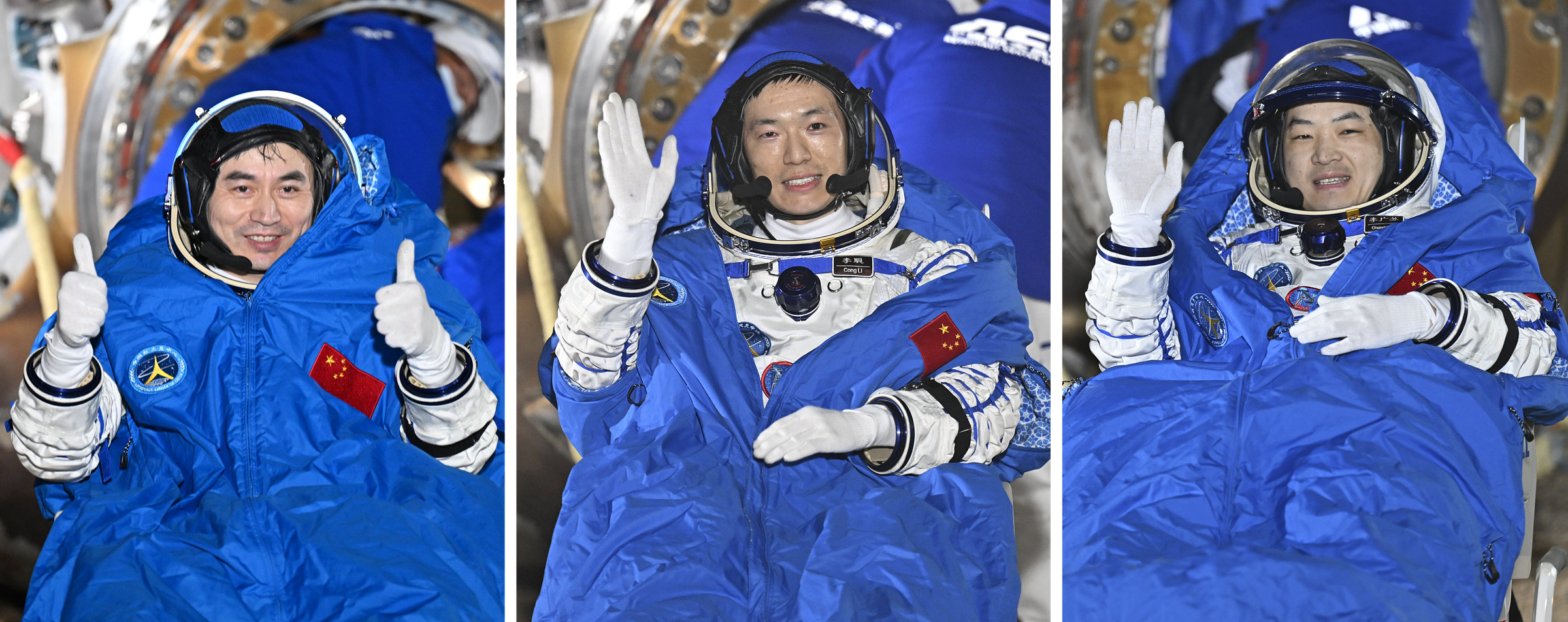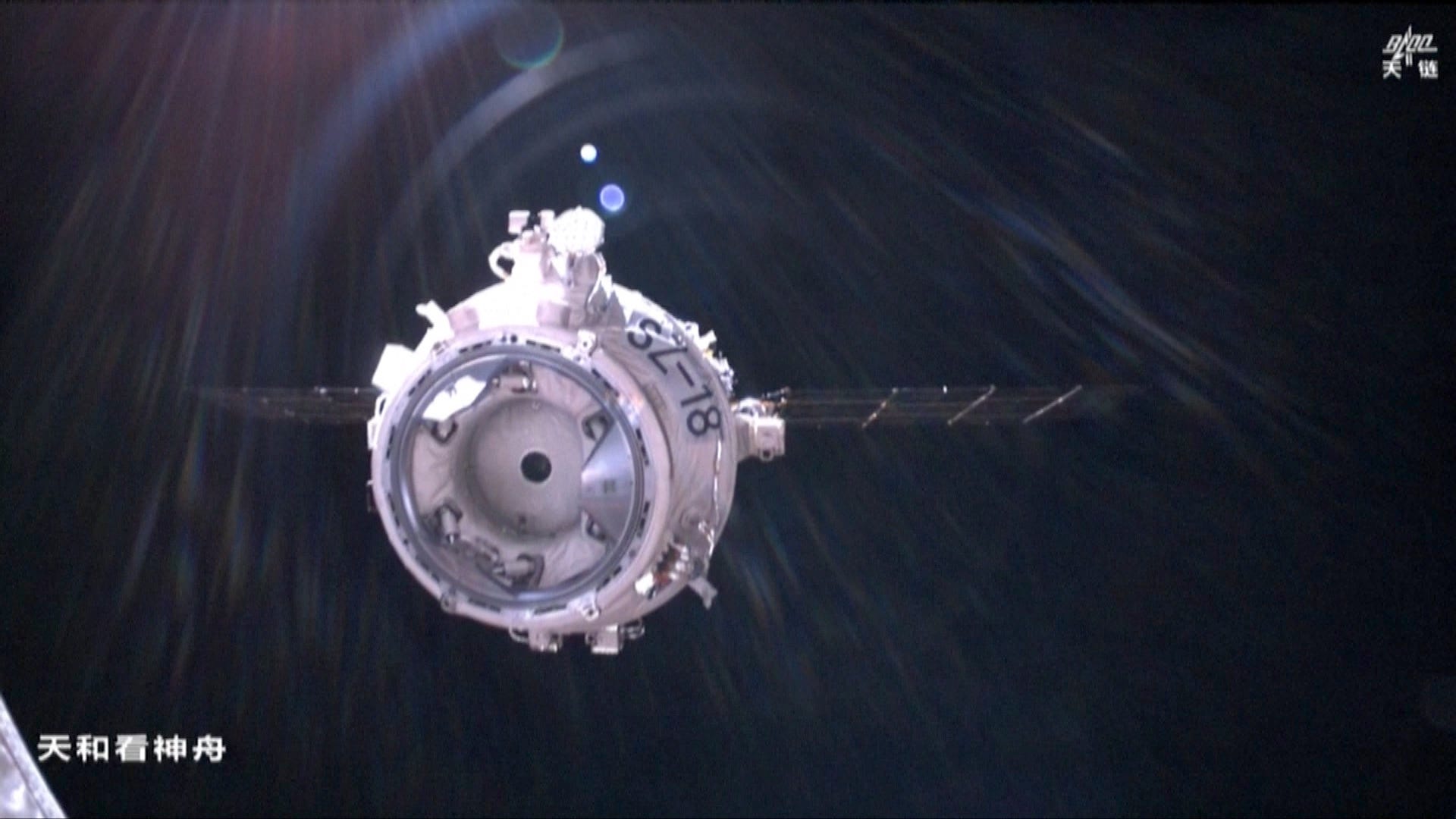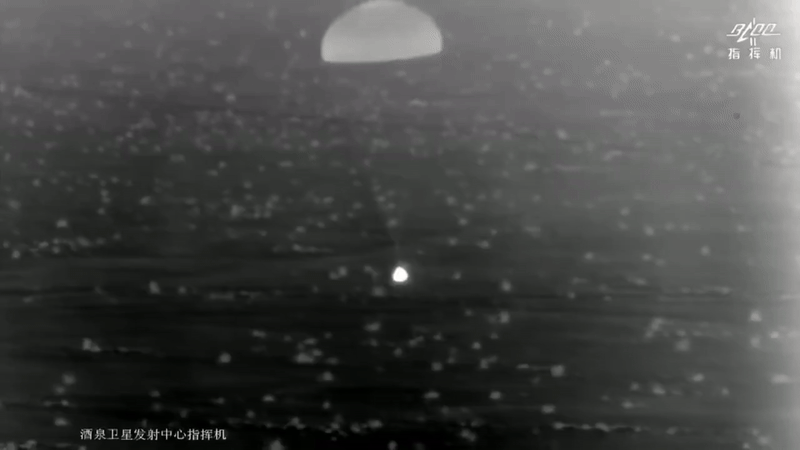Shenzhou-18 crew end six-month mission
The three taikonauts participating in the Shenzhou-18 mission safely touched down in northen China to end their mission.
At 16:12 pm China Standard Time on November 3rd, the Shenzhou-18 spacecraft undocked from the Tiangong Space Station with taikonauts Ye Guangfu (叶光富), Li Cong (李聪), and Li Guangsu (李广苏) onboard. The taikonaut trio headed to the station back on April 25th and arrived in the early hours of the 26th, just over six months ago.
In the early hours of November 4th, 01:24 am China Standard Time, the Shenzhou-18 spacecraft’s reentry capsule touched down at the Dongfeng Landing Site, within the Gobi Desert in the Inner Mongolia Autonomous Region. A little over an hour later all three crew were confirmed as out of the capsule, and en route to medical facilities for a regular post-mission check-up.
(In Universal Coordinated Time, the Shenzhou-18 spacecraft undocked at 08:12 am and touchdown occurred at 17:24 pm, both on November 3rd).
As is standard for routine missions to China’s space station, three crew were onboard with two first-time flyers and one veteran. Li Cong and Li Guangsu were both flying for the first time and have now spend a little over 192 days in space. The veteran for the Shenzhou-18 mission was Ye Guangfu, performing his second trip to Tiangong and bringing his total time in space to just over 374.5 days.
Ye also currently stands 47th among the top fifty people with the longest combined stay in orbit, and he is China's only taikonaut to have spent more than a year in space. Cai Xuzhe (蔡旭哲) is also expected to achieve a year in space once the Shenzhou-19 mission ends next year, having already spent 182 days in orbit for the Shenzhou-14 mission.

While aboard the station for six months, the crew conducted two spacewalks to perform maintenance and install hardware. The first spacewalk (May 28th) had Ye Guangfu and Li Guangsu spend approximately eight and a half hours outside, setting a new spacewalk record for China, inspecting the exterior of the station, installing protection for power systems, and installing micrometeorite shields on the outside of the station. A second spacewalk took place a little over a month later (July 3rd), with Li Cong and Ye Guangfu installing protective coverings for external cables on the Wentian laboratory module, and coverings for both cables and pipelines on the Tianhe core module.
Accompanying the Shenzhou-18 crew were also some non-human travelers, a group of Zebrafish. During the mission, CGTN reported that the taikonauts observed the fish’s abnormal directional behaviors, including swimming upside down, rotating, and circling. Coming back to Earth with the crew were water samples, fish eggs, and other specimens, along with videos of Zebrafish movement in space for scientists to study. Scientists from the Chinese Academy of Sciences hope to learn about self-sustaining ecosystems in microgravity, the effects of radiation on small biological organisms, and how to mitigate bone loss with the experiment.
In the days leading up to the Shenzhou-18 crew’s departure, the ‘key’ to the Tiangong Space Station was handed over to the Shenzhou-19 mission for their six-month mission. The ‘key’ handover ceremony also had Cai Xuzhe take command of the station from Ye Guangfu.





